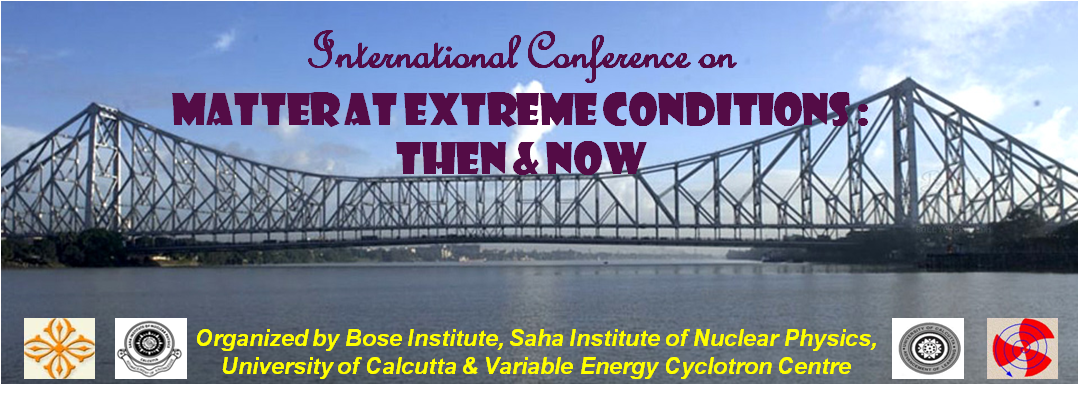Speaker
Ms
Anupriya Jain
(SPMS Thapar University, Patiala)
Description
At low temperature and density hadrons are the prevailing degrees of freedom that determine the properties of nuclear matter. However, under extreme conditions of high temperature or of high density (or both) this is expected to change. One of the key quantities for testing the theoretical model of a nucleus is the nuclear radii. The nuclear radii depend primarily on number of nucleons (A) i.e. R0 = r0 A1/3 where r0 = 1.2 fm [1]. However, this formula is not valid for nuclei in which number of protons (Z) and neutrons (N) differ significantly. In order to have the modifications over the liquid drop radii, various parameterizations of radii have been proposed during last 3-4 decades [2]. Various studies exist in the literature that demonstrate the importance of nuclear radii in the reaction dynamics throughout the energy range [3]. Some of the radius parameterizations have different radii for protons and neutrons and thus have explicit isospin dependence in them. The neutron skin thickness (difference between the proton and neutron root mean square radii) is a very sensitive probe to measure the pressure difference that exist between the neutrons and protons. This difference is found to be sensitive to the symmetry energy as well as to the equation of state of isospin asymmetric nuclear matter. This property provide fundamental information about the nuclear structure. Motivated by the above results, we hereby aim to study the role of isospin dependence of radius and its comparison with the liquid drop model in fragmentation. The present study is carried using Isospin dependent Quantum Molecular Dynamics (IQMD) model [4]. Our findings revealed that radius as well as its isospin dependence have a significant role on fragmentation. Lighter systems shows a strong dependence on the isospin dependent radius compared to heavier systems for the same neutron to the proton ratio. Moreover, isospin dependent radius is able to reproduce the experimental findings nicely.
Acknowledgment
This work has been supported by a grant from the Council of Scientific and Industrial Research (CSIR), Government of India [Grant No. 03(1231)/12/EMR-II].
References
[1] A. Bohr and B.Mottelson, Nuclear Structure, Vol. 1, W. A. Benjamin Inc., New York, Amsterdam (1969).
[2] B. Nerlo-Pomorska, K. Pomorski and B. Mach, Nucl. Phys. A 562, 180 (1993); H. Ngo and Ch. Ngo, Nucl. Phys. A 348, 140 (1980); G. Royer and R. Rousseau, Eur. Phys. J. A 43, 67 (2009).
[3] R. K. Gupta et al., J. Phys. G: Nucl. Part. Phys. 18, 1533 (1992); D. Q. Fang et al., Chin. Phys. Lett. 28, 102102 (2011).
[4] C. Hartnack et al., Eur. Phys. J. A 1, 151 (1998); C. Hartnack et al., Phys. Rep. 510, 119 (2012).
Author
Ms
Anupriya Jain
(SPMS Thapar University, Patiala)
Co-authors
Ms
Sangeeta Arora
(SPMS Thapar University, Patiala)
Dr
Suneel Kumar
(SPMS Thapar University, Patiala)
